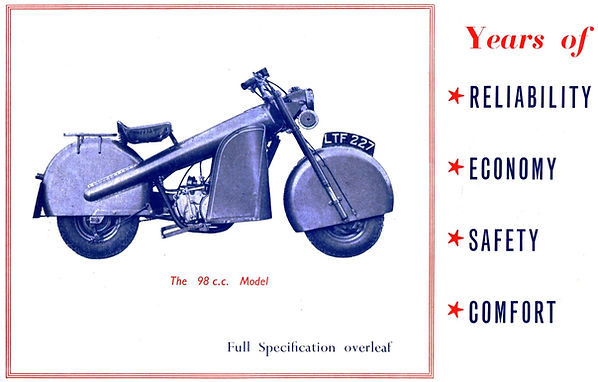All Velosolex Club U.K. publications are in English. They have been checked and occasionally corrected, updated or reformatted if required, to enable today’s Velosolex owner to get the best from their machine.
Clicking on the chosen handbook will open it as a PDF which can then be downloaded.
All Velosolex Club U.K. publications are in English. They have been checked and occasionally corrected, updated or reformatted if required, to enable today’s Velosolex owner to get the best from their machine.
Clicking on the chosen handbook will open it as a PDF which can then be downloaded.
All Velosolex Club U.K. publications are in English. They have been checked and occasionally corrected, updated or reformatted if required, to enable today’s Velosolex owner to get the best from their machine.
Clicking on the chosen handbook will open it as a PDF which can then be downloaded.

Bond Owners' Club
The club catering for all enthusiasts of Bond vehicles
1949 - 1953 Bond Minibyke
Lawrie Bond, the designer and manufacturer of the original prototype Minicar, sold the manufacturing rights to Sharp's Commercials in 1948 to finance his next project - the Minibyke.
The Bond Aircraft and Engineering Company Limited at Longridge in Lancashire was Lawrie's own company and he was keen to develop the Minibyke. This was a little lightweight design of motor scooter using a Villiers 1F 98cc handlebar-controlled two speed engine. The frame was an unusual tapered stressed-skin, elliptical-section tubular aluminium construction, pop-riveted together. At the rear, flanged U-shape sections were riveted to an enclosed rear mudguard. Suitably strengthened at the lower edge, this then became the rear hub mounting. The front saddle mounting and 1" wide, looped, engine cradle were attached to the frame with nuts and bolts before the fuel tank was installed inside. Finally, a large aluminium headstock casting was secured in place.
%20Lawrie%20Bond%20riding.jpg)

Originally, the rigid front forks were just strips of mild steel riveted to the enclosed front mudguard and attached to the headstock, but these were changed to a tubular design for the initial production run. The 16" x 4" balloon tyres fitted to Bond-designed wide split-rim type wheels were intended to look after the riders comfort whilst some weather protection was provided by the combined legshields and footboards. The total weight of the prototype was only 90lbs. and with an intended cruising speed of 35 - 40 m.p.h., it was estimated that the machine would be capable of over 200 m.p.g.
When it was announced in September 1949, C. P. Read from 'Motor Cycling' road tested one of the original prototype machines (LTB 364) and was initially sceptical of its out-of-the-ordinary construction and the absence of even front springing. After being pleasantly surprised by the former's robustness, he had this to say regarding the latter: 'The whole affair felt extremely rigid - a bit too rigid, I thought when I hit a few pot-holes and I later strongly advised the employment of at least front suspension, even though it would most certainly increase weight and cost'.
The B.A.C. eventually launched the Minibyke in January 1950 priced at £55 plus £14 17s (£14.85p) purchase tax. Continual premature failure of the rigid front forks soon led to the introduction of a simple telescopic design in April 1950. Although a few Minibykes were made at Longridge, in May 1950 the manufacturing rights were sold to Ellis (Leeds) Ltd., a textile machinery manufacturer.
Ellis soon re-designed the engine cradle to a tubular frame incorporating a new chain adjuster and introduced a 125cc JAP engined Minibyke Deluxe in December 1950. Production seems to have enjoyed a certain success and Minibykes were sold as far afield as the U.S.A. and Japan. The 98cc model finished in January 1953 with the 125cc model lasting until August. A final total of approximately 520 (including those made at Longridge) were made over a 3½ year period.

